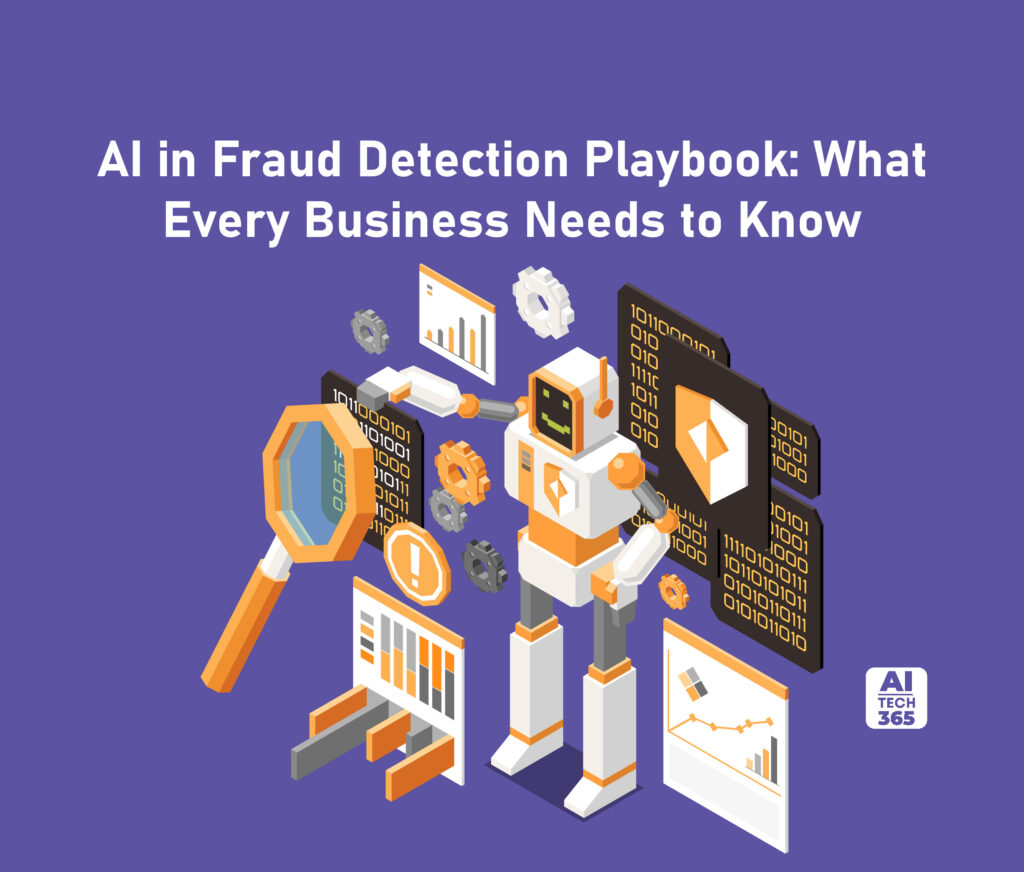The rise in digital payment app usage is making internet fraud, cyberattacks, and financial crimes a bigger threat. This endangers the growth and success of many businesses, especially those in finance. This increased the need for AI in fraud detection to enhance internal security and streamline business processes.
Artificial intelligence is used in fraud detection to identify trends and abnormalities in data that point to fraudulent activity. The ability of AI-based fraud detection systems to process massive amounts of data in real time is one of its most important advantages. Card fraud, account takeover (ATO), document forgery, the establishment of false accounts, and other prevalent sorts of fraud are all things AI is frequently capable of detecting.
Without further ado, let’s break down the concept of AI in fraud detection.
Artificial intelligence uses techniques like big data, real-time screening, intricate digital fraud prevention, etc. to identify these frauds. For the past two decades, fraud losses have cost the world’s economy an average of 6.05% of its gross domestic product. Businesses also state that data breaches have resulted in financial losses ranging from 3 to 10% of their revenue. Cybercrime is the second most frequent sort of threat that financial services face, after client fraud, according to the Global Economic Crime and Fraud Survey 2022.
Additionally, it is anticipated that between 2023 and 2027, losses from digital fraud will hit $343 billion globally.
Let’s explore the common types, techniques, and hazards associated with using AI-powered fraud prevention.
The typical fraud types that AI can identify are:
- Card theft: AI can identify fraudulent or unauthorized credit card use by reviewing transaction data and seeing anomalous activity like recurring large transactions or purchases made in odd places.
- Account Takeover: It is the practice of stealing login information to enable unauthorized access to a victim’s account. AI in fraud detection can quickly find these despite numerous failed login attempts. AI uses multi-factor authentication and requests extra data.
- False documentation: Document forgery fraud involves modifying real documents or fabricating new ones. Artificial intelligence (AI) uses a document’s digital or physical features, such as its typeface, spacing, alignment, and metadata, to identify fraud.
- False Account Creation: False accounts are formed to spread misinformation, propagate malware, and alter product reviews, which are typically written quickly and automatically by bots. AI uses biometric verification, document verification, and personal information validation to stop this from happening.
Which Techniques Are Employed by AI in Fraud Detection?
- Massive Data: Financial organizations are vulnerable to fraud since they have a lot of transactional and consumer data. They can identify abnormalities by predicting patterns in the data.
- Instant screening: Artificial intelligence (AI) fraud detection and management solutions carry out real-time screening of sensitive data and transactions across accounts and users.
- Network Evaluation: AI examines social networks and financial activities to identify fraud. Network analysis shows the connections between people and transactions to spot fraudulent activity.
- Authentication via a biometric: AI uses multi-factor authentication, such as biometric authentication, to stop credentials from being compromised or stolen. Along with fingerprint scanning, it also uses facial recognition.
The advantages of utilizing AI in fraud detection systems are substantial. The amount of time and money needed to detect fraud is decreased by this technique. Using machine learning techniques would make the detection accurate. Historical data is used to accurately detect patterns and connections between various data sets. False positives can be less likely to occur. Finally, consumer satisfaction can be raised via AU-based fraud detection systems. Customers can process their own transactions quickly and without much delay. Customer loyalty may increase as a result of an improved customer experience.
What is the Role of AI in Fraud Detection?
Without sacrificing the consumer experience, using AI in fraud detection can result in a quicker, more accurate, and more efficient procedure.
- Improved accuracy: AI systems are capable of analyzing enormous volumes of data and spotting patterns and anomalies that are challenging for humans to notice. Even better, AI algorithms can grow over time and become more accurate by learning from data.
- Real-time monitoring: Organizations can keep track of transactions in real-time using AI algorithms for fraud detection, which enables quick detection and action against suspected fraud efforts.
- Reduced false positives: The frequency of false positives, where legal transactions are incorrectly identified as fraudulent, is one of the difficulties in fraud detection. False positives are decreased by AI algorithms’ learning capabilities.
- Efficiency boost: AI systems may automate repetitive jobs like analyzing transactions or confirming identities, which means less manual intervention is required.
- Cost cutting: Fraudulent actions can have a serious negative impact on an organization’s finances and reputation. Artificial intelligence algorithms can help firms save money and maintain their reputation by lowering the amount of fraudulent cases.
What are the Risks of Using AI in Fraud Detection?
There are risks associated with using AI-powered technology, some of which can be partially mitigated through explainable AI solutions.
The following is a discussion of the potential concerns of using AI to detect fraud:
Algorithms with bias: AI algorithms rely on training data that may be skewed. A biased set of training data could lead to erroneous findings from the algorithm.
Automated processes can generate results that are falsely positive or fraudulently negative. False positive refers to a transaction that is mistakenly classified as malicious conduct, whereas false negative refers to the disregard of fraudulent activity.
Lack of transparency: It can be difficult to comprehend why a certain transaction was flagged as possibly fraudulent because some AI algorithms are complex to interpret.
Explainable AI can aid in reducing the risk factors that are already present. The phrase describes the creation of AI systems that can communicate their decision-making procedures in a manner that is understandable to people. Explainable AI can offer precise and understandable justifications for why a specific transaction or activity was flagged as potentially fraudulent in the context of fraud detection.
The Montreal Declaration for Responsible Development of Artificial Intelligence, for instance, offers ethical guidelines for AI development, such as openness and explicability.
Final Thoughts
The integration of AI in fraud detection is revolutionizing the way we combat financial crimes. Through its advanced algorithms and machine learning capabilities, AI has proven to be a powerful tool in identifying fraudulent activities with unprecedented accuracy and speed. By constantly analyzing vast amounts of data, AI can detect patterns, anomalies, and suspicious behaviors that humans might miss. This not only helps businesses and financial institutions protect themselves and their customers from fraud but also saves valuable time and resources.

